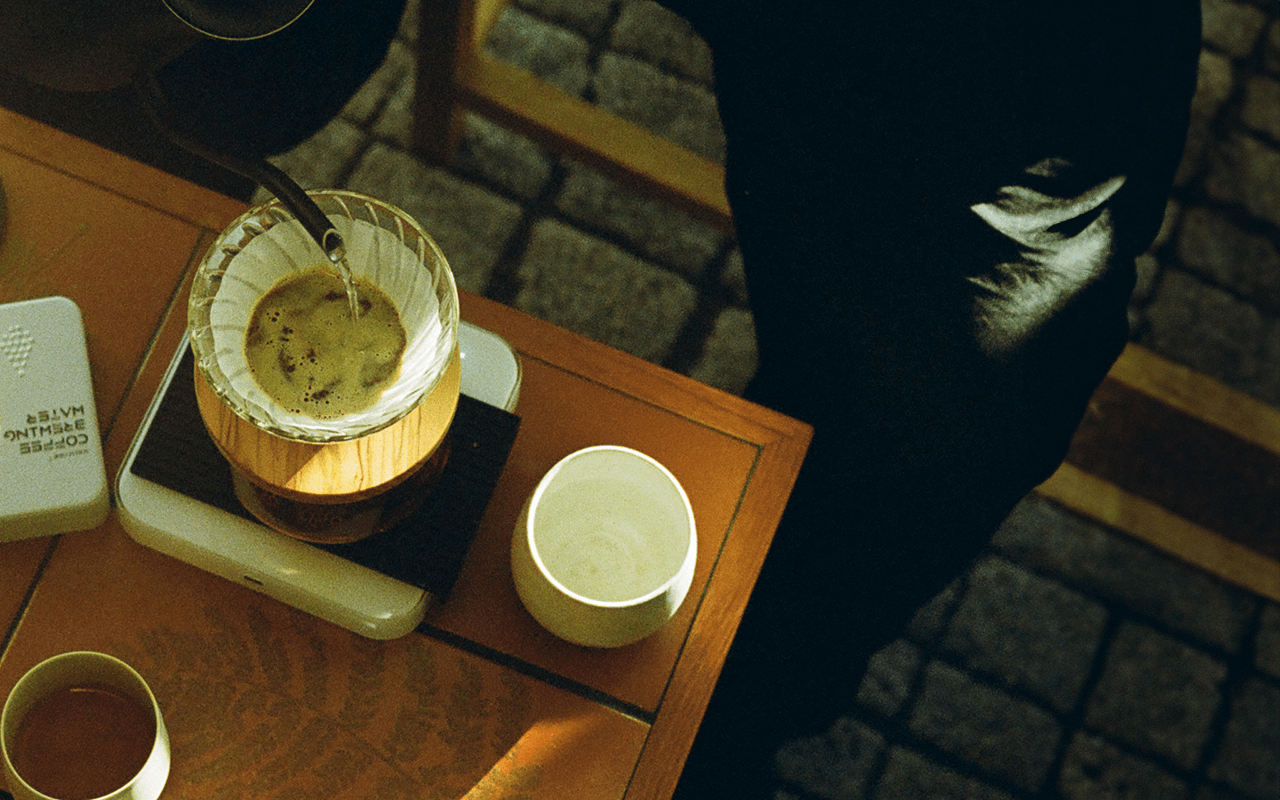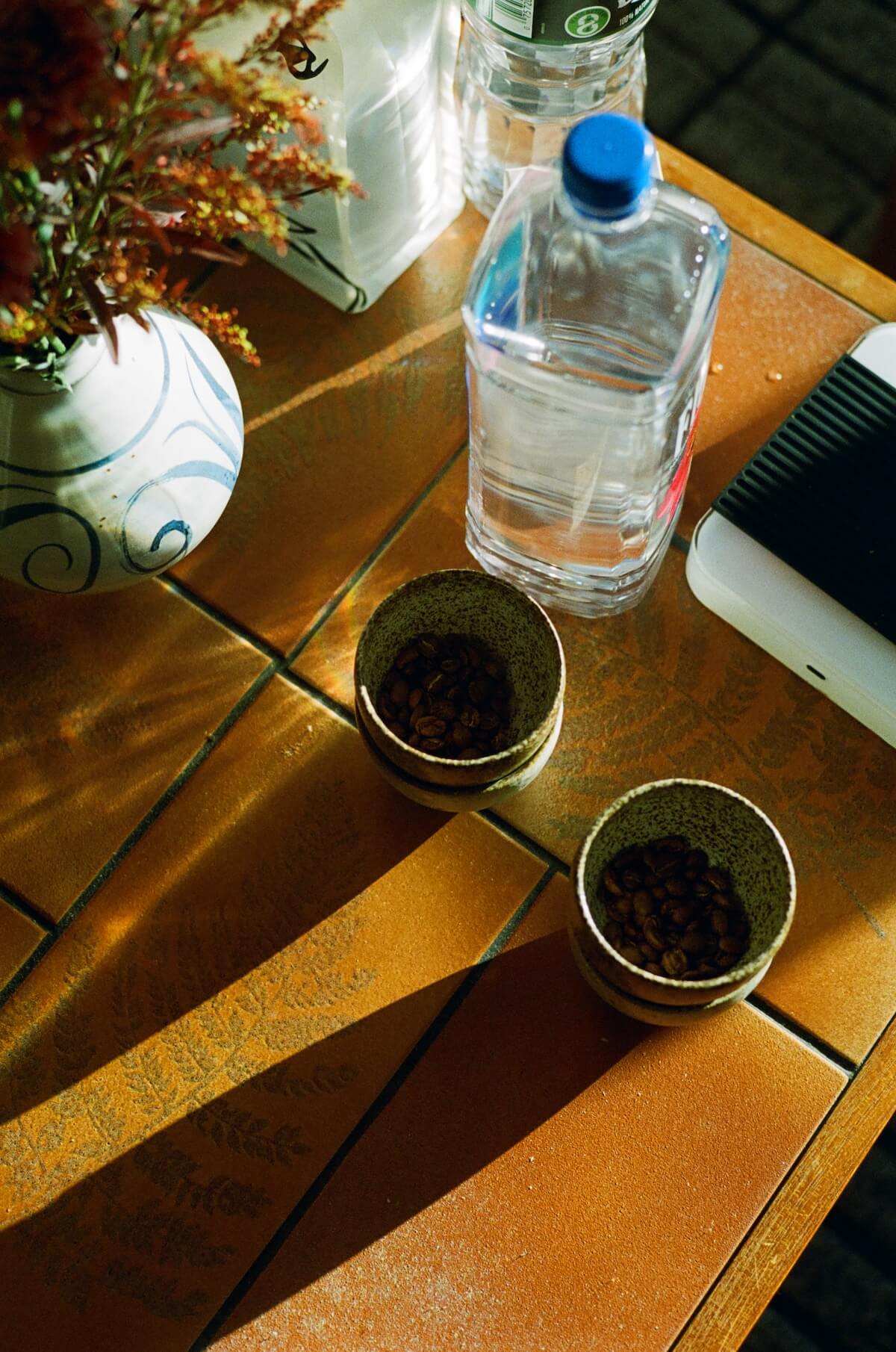
Water and Coffee
Water makes up more than 98% of a black brew, and around 90% of an espresso, so the water chosen makes a huge difference to all aspects of the final character of the brew.
Read about different aspects affecting your brewing below:
The balance and level of the water’s mineral content makes a huge difference to what we are able to extract from coffee. Dissolved minerals in water exist as charged ions, which help us to bind to the flavour compounds in coffee that lead to the most exciting and involving cups. For coffee brewing, we can think of these minerals existing in two broad categories, General Hardness (GH) and Carbonate Hardness (KH). For natural water hardness, the two most important GH ions are Magnesium and Calcium. Magnesium has a very strong attraction to natural acid molecules, so has a huge effect on perceived acidity in coffee, pulling out flavours we like to describe as fruits in coffee, normally sharper acidities like citrus and forest berries. Calcium has a slightly weaker interaction, so tends to enhance softer acidities like strawberry and cherry, while also directly enhancing body.
The final piece in the puzzle is KH, which has a slightly more complicated interaction. Through a phenomenon known as buffering, the carbonate hardness tries to keep the pH (the scientific measurement of acidity) of the water around 7, which is neutral. This means that controlling KH is very important. Too little, and the coffee tastes unbalanced and sharply acidic, no matter what brewing parameters are changed. Too much, and it is impossible to perceive any acidity in the coffee, leaving a flat and dull cup.
One aspect that can affect the overall expression of the cup is the water temperature that you brew with. The hotter the more you will extract from the coffee, both the good and bad and vice versa. In simple terms we recommend using a hot temperature like 96-98C for our coffees when perfectly rested, but if the coffee is a bit fresher a lower temperature, like 90-92C will result in more balanced cup. furthermore a lower temp will give a bit more sweet and arguably muted cup. We also like to recommend to use lower temperatures for Anaerobic coffees since they can become overpowering and unbalanced in their funky flavour profile.
One last thing to be aware of is the brewing material you are using, plastic brewers keep the coffee hotter, so a temperature of 98C might be a bit too hot. Glass and ceramic is in the middle, we like to use 98C here. With materials like copper and metal we sometime find the best balance with 100C water since the metal absorbs so much heat from the brew.
Finding the right brewing water is possibly even more important than the brewing method.
We recommend using mineral water of a soft Total Dissolved Solids count, ideally around 50 ppm, or asking your local speciality coffee bar if they can provide you with some of their filtered water. For our customers in Aarhus, we are always happy to provide this at either of our locations.

Temperature in Espresso
When brewing espresso, we recommend using low TDS water around 50ppm. We maintain a temperature of 96 Celsius in all our stores for optimal extraction during quick brew times. Additionally, it's important to consider the temperature of the portafilter and grouphead. In our stores, we use a cloth for temperature stability during brewing and rinse the grouphead beforehand to ensure consistency in every shot. We also take note of changes in ambient and coffee temperatures as they can affect the shot consistency and flavor. If a grinder has been idle for a while, the first one or two shots might vary slightly.
Quality and consistency
Applying these practices at home can improve the quality and consistency of your espresso. Keeping your portafilter consistently hot or cold can prevent fluctuations in shot times. Also, properly preheating the machine and monitoring the grinder temperature are essential to avoid wasting shots.
If you're experimenting with temperature when brewing espresso, keep a few things in mind. We don't recommend using water below 90 Celsius. The fast brew time of espresso can result in acidic and unbalanced shots at this temperature. Conversely, using water above 96 Celsius is also not advisable as it extracts more roasted and darker flavors from the coffee.

Resting Coffee
We have spoken for some time about the advantages of resting our coffees. Dense, high-grown coffees, especially when roasted lightly, have a very hard and tight inner structure. This means that the degassing process, during which gasses generated during the roasting process move out of the bean, is very slow compared to darker-roasted, or less dense coffees. Therefore, for the coffees we buy and roast, the optimum resting period is often longer than you would expect, meaning that it is possible to taste the effects of these gasses long after roasting.
We still recommend resting our coffees for at least 10 days, and maintain that we often find excellent results, especially for particularly dense coffees, beyond 6 weeks.
Resting process
We find that during the resting process, harsh and astringent flavours, which can even be perceived as a ‘roast’ character, soften out, allowing a clearer and brighter expression of the coffee’s character to shine through. This means that a careful approach is required in order to minimise these flavours when brewing fresh coffees.
For example, when brewing coffees less than 2 weeks from roast, we often use a lower brewing water temperature, and reduce contact time. This gentler mode of brewing reduces the harsher character that can often result from brewing coffee too close to roasting. At the other end of the scale, when brewing very well rested coffees, more than 6 weeks from roast, we find that we can push the extraction further than expected, without any trace of these harsh or astringent flavours. We can use a higher water temperature, and split the brew into more pours in order to increase contact time, resulting in a rich and sweet cup, while still holding on to a high level of flavour and aroma clarity.

